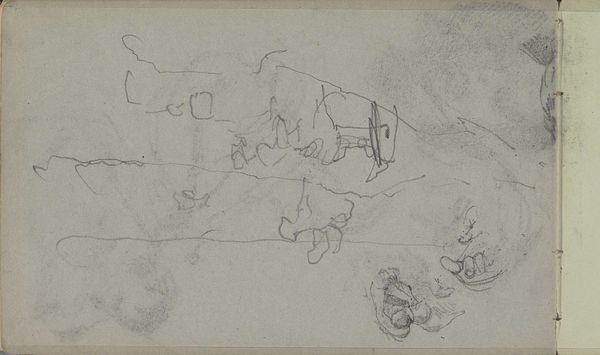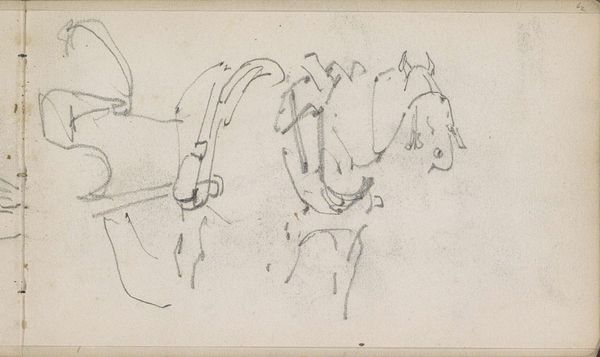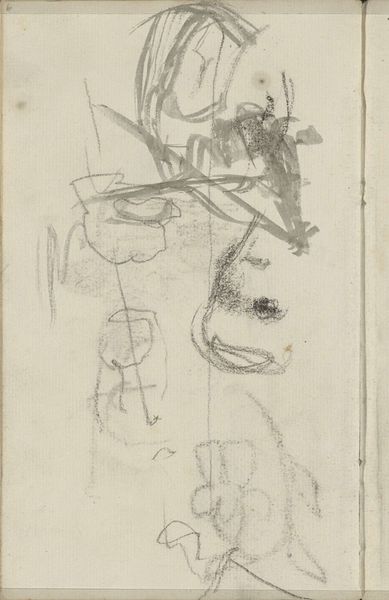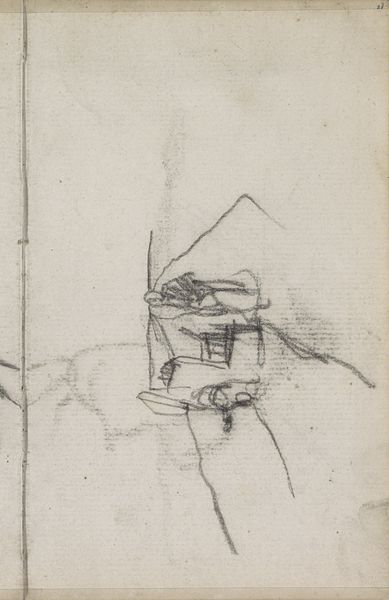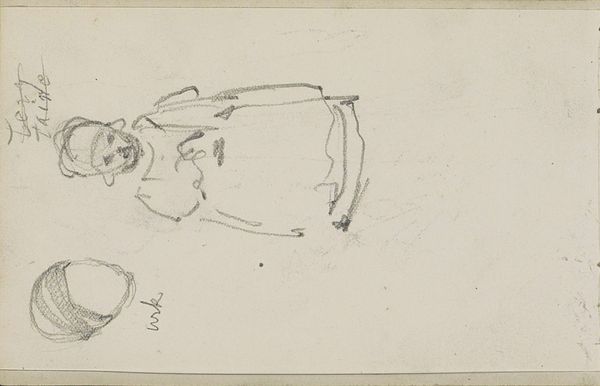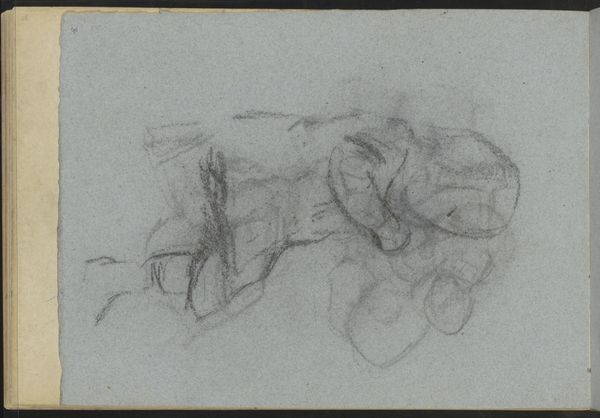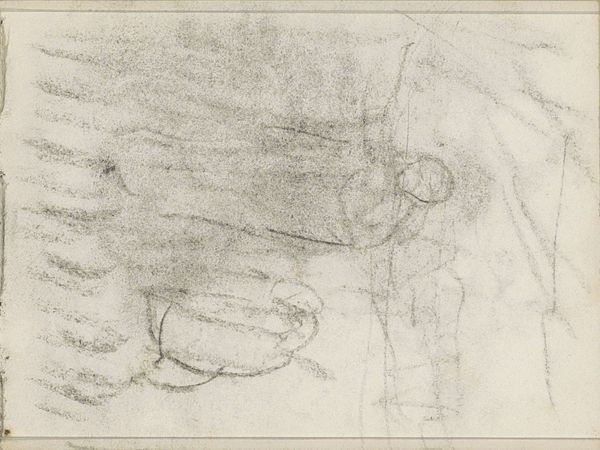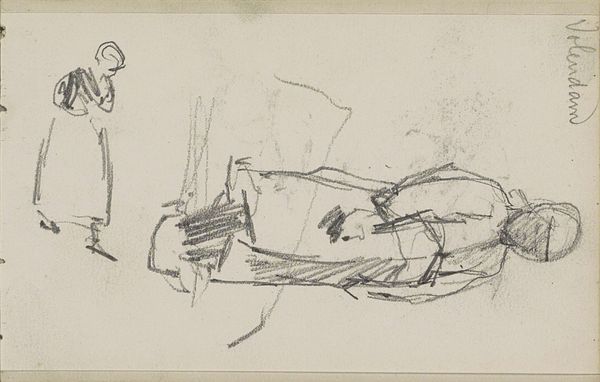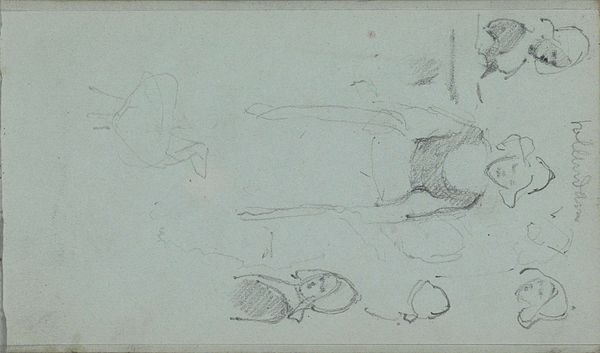
drawing, pencil
#
drawing
#
toned paper
#
light pencil work
#
quirky sketch
#
impressionism
#
incomplete sketchy
#
landscape
#
personal sketchbook
#
idea generation sketch
#
ink drawing experimentation
#
pen-ink sketch
#
pencil
#
sketchbook drawing
#
sketchbook art
Copyright: Rijks Museum: Open Domain
Editor: This is "Herder met een schaapskudde," or "Shepherd with a Flock of Sheep," by Anton Mauve, likely from somewhere between 1876 and 1888. It's a pencil drawing, and I'm struck by its immediacy; it feels like a fleeting observation captured on paper. What's your take on this piece? Curator: The use of pencil on toned paper is key here. It highlights Mauve's interest in the direct, unmediated process of making. It brings the economic realities and labour that shape artmaking to the fore, in that quick strokes with graphite pencil reflect not only artistic decisions but material availability and production constraints. Do you agree? Editor: I do. It feels less precious than, say, an oil painting. Was this typical of Mauve’s practice? Curator: Mauve came from humble beginnings. This material choice aligns with his background and reveals a commitment to representing working-class subjects with methods accessible to broader populations. The toned paper provides the base value so that value does not need to be build-up via time consuming mark-making to achieve desired tonal values. This creates opportunity for experimentation that results in new processes. Editor: That’s interesting! So the materiality really reflects the subject matter, and speaks to broader economic and social forces. Curator: Precisely! The 'sketchy' nature becomes less about "incomplete" aesthetic, but a means of capturing ephemeral observations through rapid, efficient gestures driven by material and economic limitations. This invites us to reflect upon labor involved in the making and on modes of art production that democratise both artwork production and depiction of a wider subjecthood than conventional artwork did at the time. Editor: I see the drawing differently now; it’s not just a quick sketch, but an engagement with broader issues of class and artistic production. Curator: Yes, focusing on process invites richer discussion about how social and economic contexts shape aesthetic decisions and influence artistic expression.
Comments
No comments
Be the first to comment and join the conversation on the ultimate creative platform.


